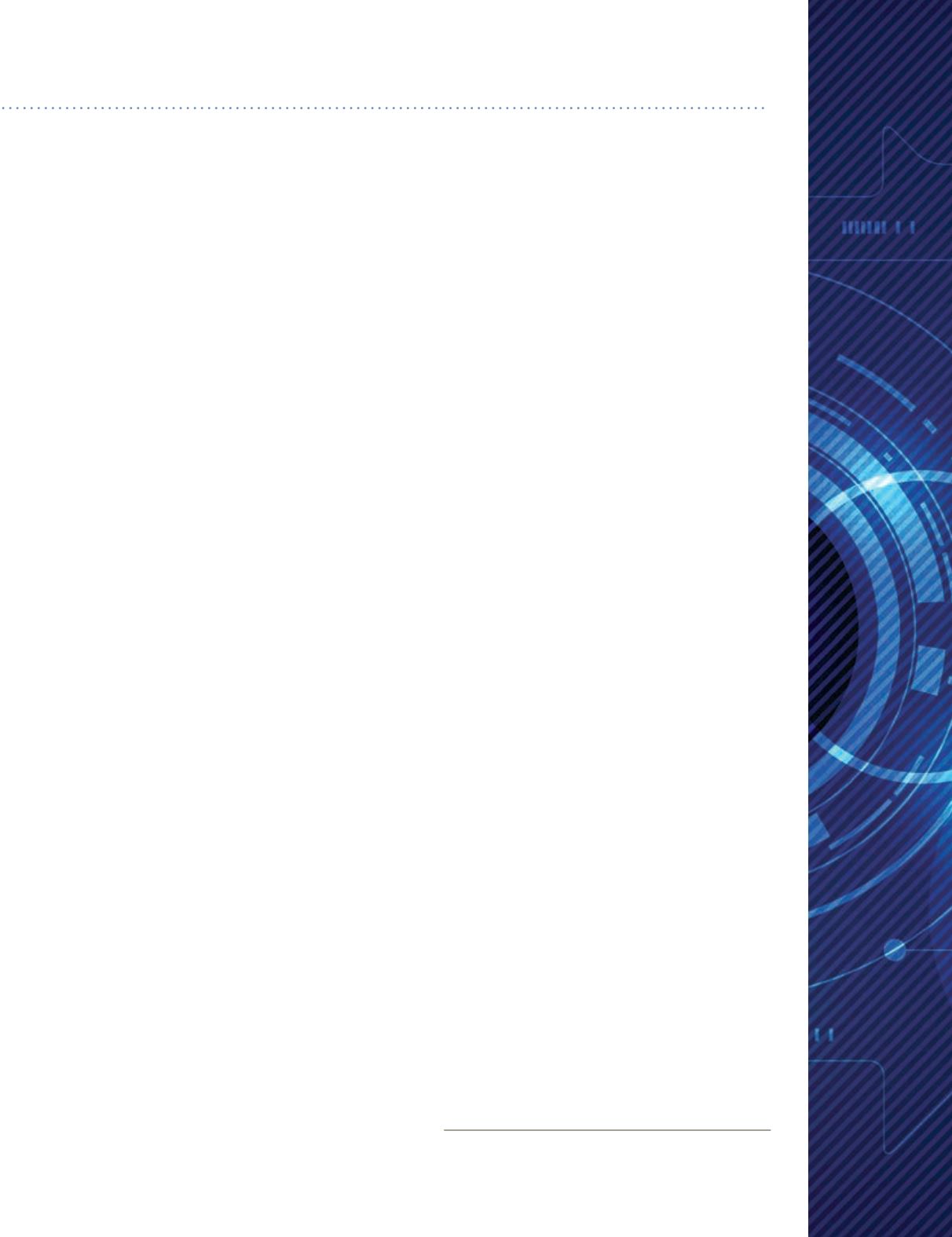
23
and conversations about “growth” inevitably have brought
up questions regarding the practicality of books and where
they should live,
if at all
, in the stacks.
According to architect Philip Laird, many schools are
seeking appropriate program components to fill the gaps
left by declining book collections. He notes that his firm
is hearing more frequent requests from its clients and
potential clients to create flexible, open spaces for gath-
ering and collaboration.
“The whole concept of what is a library is changing
rapidly,” he says. “There is a movement to try to invigorate
the library spaces as academic hubs by adding components
such as interdisciplinary classrooms, faculty offices, and
department centers for attracting students to learning
opportunities.”
These types of spaces, adds Laird, are becoming pres-
ent in a full range of libraries, from small community
branches to high schools and colleges to prominent civic
institutions, such as the New York Public Library. Designers
are trying to find the right balance, he says, between
traditional quiet spaces for study with new animated
spaces for innovation and creative discussion.
The incorporation of the CIT has many SPS teachers
and administrators excited for what’s to come, not least
because it’s an initial step to address the way today’s
scholars prioritize information.
“Students are coming to us with this idea already
ingrained that if you want to learn more about a topic
you go to a search engine,” says Alisa Barnard ’94, dean
of studies and humanities teacher at SPS. Barnard says
that, among the many goals of the new CIT, which will
provide academic affairs faculty with new office space, it
aims to drive students to a more collaborative learning
environment, stemming from the preference for students
to “hole up” in their dorm rooms. “It’s part of a larger
question because a lot of schools are wrestling with,
‘What’s the value of a library? What’s the bang for your
buck with this huge amount of footage, with these
dwindling numbers and huge volumes of books?’”
For her part, Barnard is a big advocate for the printed
page. She remembers spending long hours poring
through the books at Ohrstrom, collaborating with her
peers, and discussing any given topic. Parsing through
the stacks was part of the process. She was led by her
teachers and would then wander from there, digesting
gobs of dense volumes for her research papers. Today’s
reality, however, is a 24/7 news cycle, where information
comes fast and in spurts, especially with the advent of
transient sources, including social media.
“We’re up against a big challenge in that our students
come to us with less and less focus on bigger chunks of
reading,” Barnard says. “We lament that all the time. Ten
years ago I was assigning 40 pages a night as opposed to
maybe 20 now. That’s fascinating and maddening at the
same time. That’s the reality we’re dealing with.”
The development of the Center for Innovative Teach-
ing seems, in part, an answer to a new reality. If there’s
a drawback to a center that’s prioritizing digital materi-
als in favor of print, it’s that students can be easily
distracted with things like Facebook and social media,
according to Humanities Department Head Kevin
Brooks. In an ideal world, Brooks envisions a place
where print and digital can live in equal harmony,
“giving students and teachers the flexibility to choose
whichever format appeals more to them,” he says, not-
ing that even a space built solely for digital resources
comes with its own separate challenges. “One of the
disadvantages of reconfiguring a traditional library
is that the requirement for physical space shifts to
a requirement for digital storage space on servers or
‘the cloud’ or whatever.”
SPS Dean of Curriculum and Teaching Lawrence
Smith, one of the administrators who has been spear-
heading the Ohrstrom renovation and the development
of the CIT, refers to the library as a “big barn.” Contrary
to the idea that a new communal space would allow
for more active dialogue, the renovation is partly meant
to make the library less noisy. But the real goal of the
center is to broaden the efforts of SPS when it comes
to analyzing its strategic approach under Rector Mike
Hirschfeld ’85 to teaching and learning, one that ulti-
mately provides the School with concrete information
to help it stay at the head of secondary education. That
includes hiring an institutional researcher to gather
data on student behavior and habits, which is a pro-
active attempt to develop a better understanding of
what St. Paul’s is all about.
In broad terms, Smith speaks of the old guard, the
idea of “the teacher imparting wisdom to an empty
vessel.” Being able to measure that wisdom, with real
results, is more valuable than simply making assump-
tions. With the development of the CIT, SPS is banking
on a philosophy that sees technology and academia
sharing the wealth, so to speak.
“Like many other schools we have grand statements
about what we teach: compassion, intellectual curios-
ity,” says Smith. “The idea is to get to the point where
a teacher can go in and say ‘What are the learning
objectives for today?’ and then you ask the class,
‘How do you meet these learning objectives?’ It’ll all
be collaborative.”
As it relates to the new center, does that mean an inter-
lude, or even a relocation of Ohrstrom’s beloved tomes?
“Our books are awesome,” says Smith. “But I think the
days of a humanities class being sent to do its research
in the stacks are long gone.”
SPS Reference and Instruction Librarian Lura Sanborn
contributed to research for this article.


